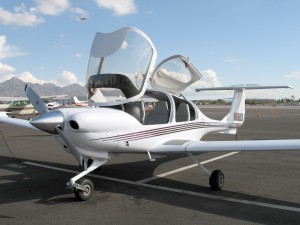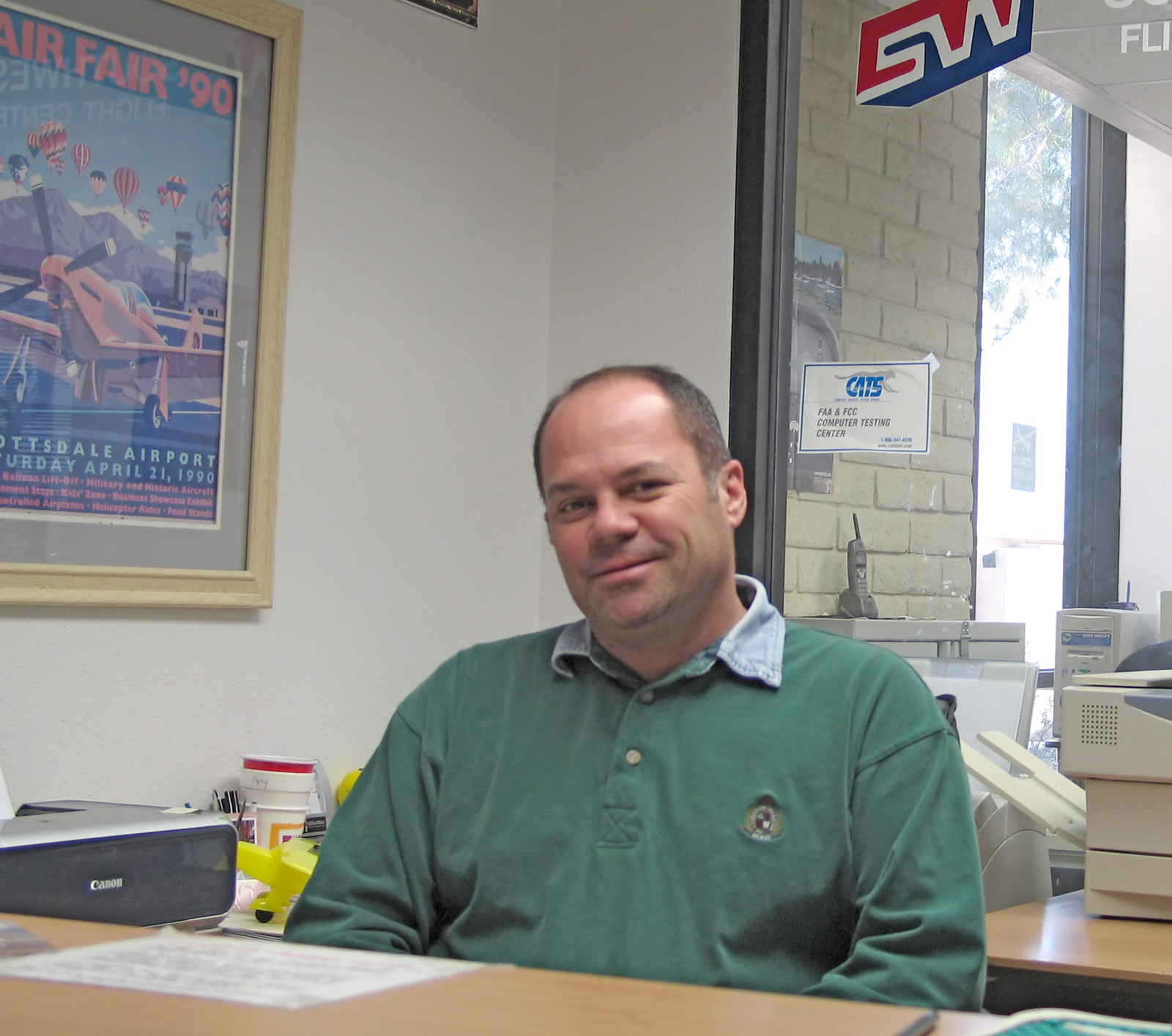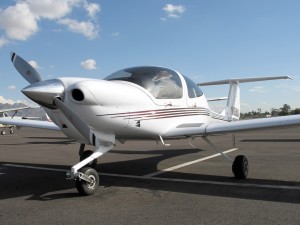By Dan Sobczak
Since the standard “T” configuration for instrument panels was introduced in 1973, the general aviation cockpit has remained virtually unchanged. The “six pack” of mechanical steam gauges—airspeed, attitude, altimeter, vertical speed, heading and turn coordinator, as well as VOR instruments for navigation—has proven a trusty companion for pilots. A revolution is now underway for GA instrument panels. The glass cockpit—first introduced in military and commercial aviation in the early 1980s and later implemented in NASA’s space shuttle fleet—has come to a Valley flight school.
Located at Scottsdale Airport (SDL) in Scottsdale, Ariz., family-owned Southwest Flight Center recently added to its training and rental fleet a sleek new Diamond Star DA40 with a Garmin G1000 glass cockpit. Southwest Flight Center has been a staple of consistency during its 22 years at SDL. The Lewins, who run the school, have seen 18 other SDL flight schools come and go.
Greg Lewin, who oversees the school’s flight operations and maintenance, holds an ATP certificate and is type rated in the King Air 300/350, Beech 1900, de Havilland Dash 8, Cessna Citation and Boeing 737. He’s logged more than 9,500 hours during his aviation career. When asked about the reason for the school’s success, Gary Lewin said, “We treat our clients fairly and expect the same from them. It works.”

Southwest Flight Center’s sleek new Diamond Star DA40 features the Garmin G1000 glass cockpit. The large canopy makes it easy for the pilot and passengers to climb in and out of the aircraft and provides exceptional views.
Lewin’s parents, Richard and Judy, manage office administration, maintaining the books, keeping track of enrollments and scheduling flight lessons. All of them share the responsibility of maintaining good client relations.
The Lewins bought the business in December 1984.
“I was working as a flight instructor when the owner, half in jest, suggested that I purchase the business,” explained Lewin. “The previous owner wanted to pursue other avenues in aviation.”
His parents agreed it would be a good opportunity to further their son’s aviation career. When they acquired the business, Southwest Flight Center had only two Cessna 152s in its fleet.
Two decades later, the Lewins have grown the flight school into a thriving business. The school maintains its own in-house maintenance department and owns a core fleet of training aircraft, which now includes one Cessna 152, four Cessna 172s, one Cessna 182 for high performance training, and a Beech Duchess for multi-engine training.
In October 2006, the new Diamond Star DA40, with its futuristic glass cockpit, was introduced into the school’s fleet. Then in December 2006, a new DA20 two-seater was added to round out the school’s Diamond single-engine fleet. Southwest Flight Center bought the two Diamonds for rentals, flight training and maintenance as an authorized service center.
The DA40 is a low-wing, four-seat composite airplane. At maximum takeoff weight of 2,535 lbs., the 180-hp Lycoming O-360-A4D engine produces a 900-foot per minute climb rate at sea level. At 75 percent power, the Diamond Star boasts a cruise speed of 134 kts, a range of 517 nautical miles on 40-gallon fuel tanks and burns 9.2 gallons of fuel per hour.
Differential braking makes taxi operations easy, even in tight areas, as long as the pilot allows for the long 39-foot wingspan. The large Plexiglas canopies offer all four occupants exceptional visibility. Control surfaces are responsive to even the slightest touch of the center stick. Stalls are benign with almost no wing drop tendency.
While the DA40’s balance of performance, comfort and economy make it an attractive and fun airplane to fly, its Garmin G1000 is the aircraft’s pièce de résistance. The glass cockpit replacing the familiar steam gauges features two 10.4-inch active-matrix LCD displays, which integrate the aircraft’s communications, navigation, flight, engine and sensor data. Most importantly, this new technology provides the pilot with intuitive, unparalleled situational awareness.
The two LCD displays serve as the primary sources of flight information for the pilot. On the left side is the primary flight display. Airspeed, altitude and vertical speed indicator are read on vertical tape scales, while the entire screen display serves as the artificial horizon. Heading, rate-of-turn, slip-and-skid, navigation, transponder and systems annunciation data are also displayed on the PFD.
On the right side is the multi-function display, providing engine data and a moving GPS map. Optional data can be overlaid onto this display, including TIS traffic information and satellite weather. Both displays provide redundant communications and navigation information.
In the event of a single display failure, the remaining display will default to reversionary mode, combining PFD information with engine data from the MFD. The G1000 uses a high-speed Ethernet data bus to drive data to the two monitors. In the rare event of a total systems failure, traditional altimeter, airspeed and attitude indicators, as well as a magnetic compass, serve as backups.
Pilots wanting to transition from traditional steam gauges to glass cockpits must overcome a learning curve. The G1000’s intuitive, user-friendly design makes this transition quick, and the technology is easy to learn with proper ground and flight instruction.
For new pilots learning to fly on glass cockpits, the transition from glass to mechanical gauges may prove more difficult. Such pilots could have a harder time assimilating aircraft information from separate, less-centralized, mechanical displays.
The glass cockpit is revolutionary and provides a whole new level of situational awareness. It addresses fears and concerns pilots may have during flight: becoming lost, engine performance, air traffic and weather. It redefines instrument flying. The glass cockpit may be the most important cockpit innovation since the invention of instrument flying, when U.S. Army Air Service Lt. Jimmy Doolittle made the first blind instrument approach in 1929.
While its technology and color displays are tempting to admire in-flight, it’s still imperative to stick to a traditional cockpit scan: heads up and eyes out.
In its first three months of availability, students, renters and both low- and high-time pilots regularly book Southwest Flight Center’s DA40.
“They love it,” Gary Lewin said.
For more information about Southwest Flight Center and its new Diamond Star DA40 G1000, visit [htpp://www.southwestflightcenter.com].














